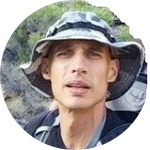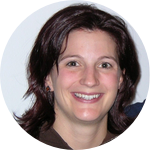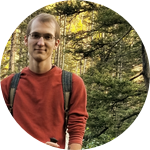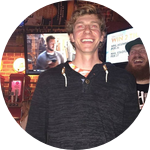About This Project
Asthma affects 20 million people living in the U.S. Asthma and cystic fibrosis patients have a thick layer of mucus that forms over the airway epithelium making it hard to deliver medication. We hypothesize that by using magnetic particles with the ability to physically oscillate and rotate, we can deliver drugs by cutting through mucus filaments. We will test this by developing a microscope insert that generates a rotating magnetic field allowing magnetic particles to rotate.
Ask the Scientists
Join The DiscussionWhat is the context of this research?
The research community is currently investigating new approaches such as the use of magnetic particles to overcome the barrier of respiratory mucus that hinders drug delivery to diseased airways.
In this strategy, particles are being pulled by external magnetic forces through the mucosal barrier. Previous research showed that magnetic iron oxide particles could not be pulled through human respiratory mucus in a static magnetic field of 10 milli Tesla due particles getting stuck in the mesh-like structure of the mucus filaments.
What is the significance of this project?
Experiments showed that the pore and void sizes of the mesh-like mucus filaments range between 100 nanometers and several microns. To determine whether rotating or oscillating magnetic particles can cut through the filaments, optical microscopy has to be used to spatially resolve the mucus mesh and rotating particles. Optical microscopes are readily available, however a microscope insert that can generate rotating or oscillating magnetic fields is not.
The significance of our project is the development of a microscope insert for optical microscopes that can generate and image rotating or oscillating magnetic particles within the mucus mesh. With the help of our microscope insert, researchers will be able to test whether rotating magnetic particles can cut through the mucus barrier.
What are the goals of the project?
The main goal of this project is to develop a microscope insert that can generate a rotating magnetic field that causes magnetic particles to rotate. Rotation of magnetic particles will be achieved by designing and mounting two pairs of magnetic wire coils positioned perpendicular to each other in the horizontal sample plane of a optical microscope.
Specifically, we will design and 3-D print coil pairs and insert base, wind magnetic wires on coils, assemble base, mount it on microscope, connect to function generator and amplifier, quantify generated magnetic field with Gauss Meter, and show that we can image rotating magnetic particles.
Budget
Rigol DG1032Z Function Generator: Used to control rotating magnetic field.
Seismic Audio - Magnitude2400 - Power Amplifier: Used to amplify signal from function generator to control the strength of the magnetic field. Amplifier must be powerful enough to produce 5Hz - 50K Hz magnetic fields in milli Tesla range.
Magnetic wire: Used to make four coils of wire that produce the magnetic fields.
3-D Printing: Coils and parts for microscope insert are 3-D printed.
Hardware: Includes Acrylic plastic sheet, nylon rods, nuts, tape, mounting base, clamping forks, pedestal bases, post holders, banana connector cables.
Gauss Meter: Used to measure the magnitude and frequency of the rotating magnetic field inside the coils.
Hand Coil Winder Winding Machine: Used to wind the magnetic wire on the 3-D printed coils.
Estimated shipping costs: This is an estimated cost for shipping expenses based on previous experience
Endorsed by
 Project Timeline
Project Timeline
We plan to develop the first prototype to image rotating magnetic particle in a fluorescence microscope. The micrsocpe insert and electronics will produce magnetic field amplitudes greater than 10 milli Tesla and accommodate various objectives. Our plan for the final design is to create a package that can be made available to other researchers.
We will share the research progress directly with our backers through lab notes and we plan to publish our final results in a scientific journal.
Feb 26, 2018
Project Launched
Apr 01, 2018
Finish the design, 3-D print coils and base parts
May 01, 2018
Wind wire on coils and assemble microscope insert. Insert unit into microscope.
Jun 01, 2018
Set up electronics and characterize rotating magnetic field.
Jun 30, 2018
Image rotating magnetic particles and publish final Lab Note which will include movie of rotating magnetic particle.
Meet the Team
Affiliates
Affiliates
Kathrin Spendier
Kathrin Spendier, wife and mother of two children received her Ph.D. from the University of New Mexico with emphasis on experimental and theoretical biophysics. Her interests include cell surface curvature in disease models, metallic nanoparticles for biomedical application, cell membrane protein dynamics, kinetic theory of particle nucleation, and reaction-diffusion theory.
Kathrin Spendier will oversee the entire project and will submit Lab Notes.
Philippe Jones
I am currently going for my Bachelors in Physics/Energy Sciences as a Senior. I have always loved physics and how Electricity and Magnetism work. There's just something about how moving charges creating electric and magnetic fields that intrigues me. For this project, I am currently making a 3-D model for the magnetic field between two identical solenoids with an alternating current running through both. I feel this project is great in the fact that we are using magnetic fields and magnetic nano-particles to see if they can be used as a medicine-carrying system for asthma patients.
Austin Routt
My primary role in this project is imaging the nanoparticles. This means that I operate the microscope and camera, and try to capture the particles rotating so that we can analyze the images and learn about their motion. I think it's exciting to see how the particles might be able to move in the human body to deliver important drugs to hard-to-access places and potentially improve quality of life. Learning how to use microscopes, cameras, and software for analysis is crucial for many scientific fields, and I feel privleged to be a part of it.
Ava Spangler
I am a high school student, and I've volunteered to help with some of the basics of this project! I am interested in pursuing a science career in the future, so the possible opportunities and experience this work provides is very exciting for me, along with the possible future applications. I hope that through this work I will gain insight into the world of science to refine my interests and future goals.
William Thompson
Hi!
I am currently working toward my Bachelors degree in mechanical engineering. I have taken over the project role of designing and improving the microscope coil insert. The project has given me the chance to gain engineering experience while working towards research that can potentially benefit many asthma patients.
Project Backers
- 17Backers
- 44%Funded
- $1,832Total Donations
- $107.76Average Donation









